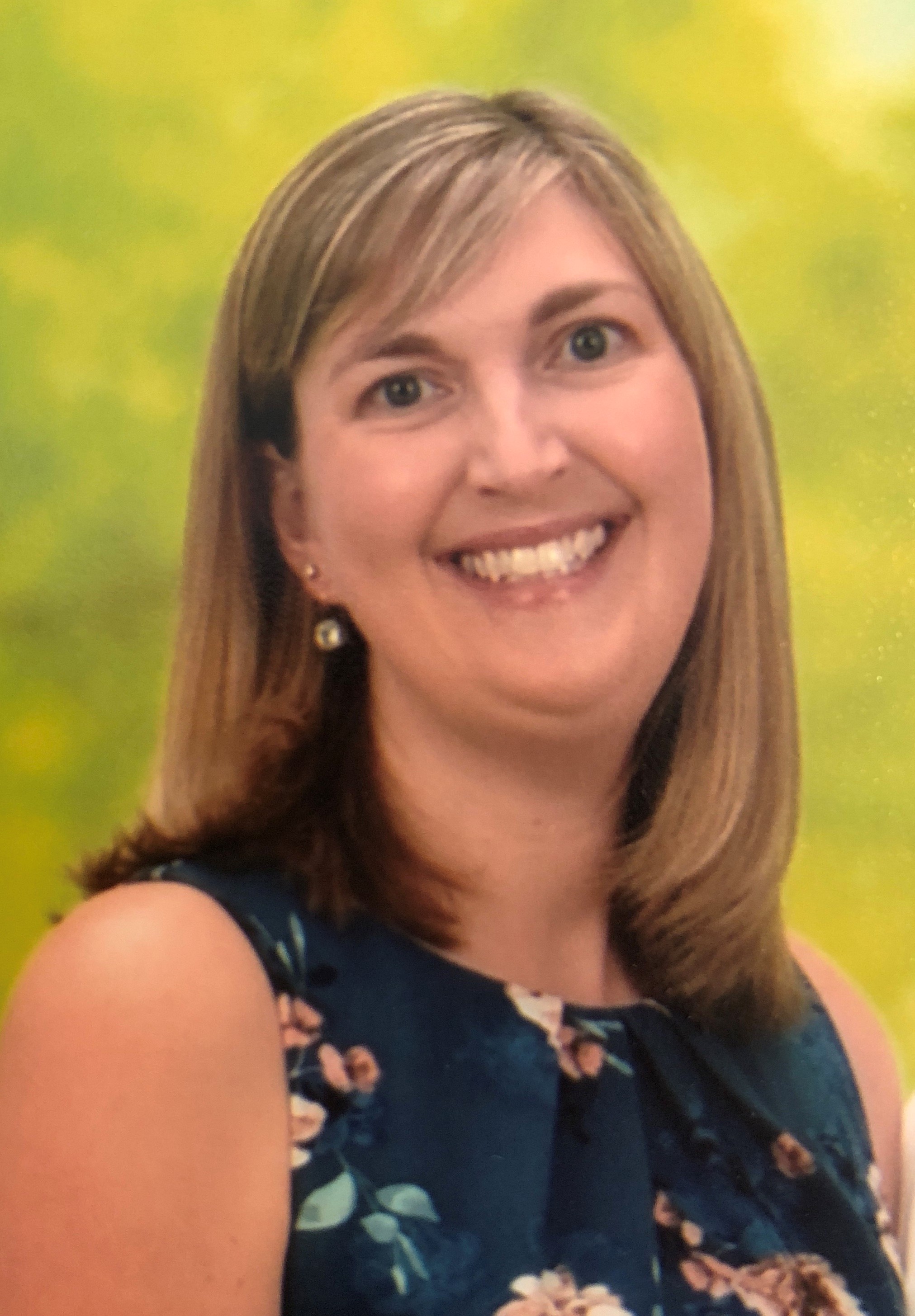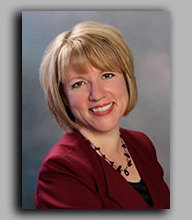
Learn ACA Subscription
-
Register
- Non-member - $295
- Student/Other - Free!
- Member - Free!
- GAC - Free!
Join ACA to receive the Learn ACA Subscription for FREE!
The Learn ACA Subscription includes:
- Over 100 on-demand courses covering the chiropractic essentials
- Monthly webinars — 12 or more new CE-eligible webinars annually
- Coding “lunch and learn” sessions with ACA experts
- CE credits available in 35 states or jurisdictions
- Recordings of all live webinars for easy access, so you can learn on your schedule
- CE transcripts or certificate storage for easy download at licensure renewal time
Click on the contents tab to view all Subscription courses. ACA members can register for individual courses within the Subscription at any time — they are always free!
CE Credits
ACA offers 12 new CE-eligible webinars annually. ACA is an approved provider of CE credits through the FCLB’s Providers of Approved Continuing Education (PACE) program. As a PACE-approved provider, ACA offers CE credits that are acceptable in 35 states or jurisdictions, as allowed by state. View the CE information page for state-specific credit approval information.
Members are granted access according to their membership status. Please email education@acatoday.org if you have any questions.
-
Contains 2 Component(s)
A proper verification of benefits is an essential step in billing insurance. It provides the foundation for proper coding and billing, as well as appealing denied claims when it becomes necessary. This presentation takes the viewer through the steps of verifying benefits, giving examples of what to look for and the questions to ask, and highlighting specific scenarios, including instances when special questioning may be necessary.
Upon completion of the Clinic Management On-Demand Learning Series, the learner will become knowledgeable on the following topics:
· Verification of Benefits: Understand the necessary components of a properly executed verification of benefits and know instances when certain special questioning is needed.
· Appeals: Understand the importance of appeals (including ERISA) and the basic process and follow through needed for optimum chances of overturning a denial.
· Self-Audits: Be able to apply the information provided in order to help ensure necessary components of medical records are in place and self-audits are performed.
· HIPAA: Be able to identify whether their clinic is in compliance with HIPAA’s basic changes, and will understand both consequences of a breach and notification requirements.
· Provider contracts: Be equipped to confidently review and understand essential portions of provider contracts and what questions to ask of payers.
Julie Lenhardt
Former Senior Director, Payment Policy
American Chiropractic Association
-
Contains 4 Component(s)
ACA is proud to host a FREE four-part webinar series on HIPAA for the Small Provider, presented by the U.S. Department of Health and Human Services, Office for Civil Rights.
Session 1:
Presenters: Hyla Schreurs and Rachel Lips
General Information
- OCR Overview
- Who is Covered by HIPAA (Covered Entities and Business Associates)
- • How the compliance process works
Privacy Rule
- What is and isn’t PHI
- Permitted Uses and Disclosures
- Incidental Disclosures
- Minimum Necessary Standard
- Authorizations
- Marketing
- Administrative Requirements (Designate a Privacy Officer, Designate Person/Office to Receive Complaints, Provide Training, Develop and Implement Policies and Procedures)
- Covered entities’ duties
Session 2:
Presenters: Hyla Schreurs and Emily Prehm
- Individual Rights (NPP, Access, Amendment, Accounting, Alternative Communications, Request Restriction, Complaints to the CE and OCR)
Session 3:
Presenters: Meghana Shah and Karel Hadacek
Security Rule- Definitions/General Rules
- What is Covered
- Standards and Implementation Specifications
- Administrative Safeguards
- Physical and Technical Safeguards
- Organization Requirements
- Security Rule Resources
Session 4:
Presenters: Emily Prehm and Rachel Lips
Breach Notification Rule- Definition of Breach
- Notification to the Individual, Media, and HHS
- Breach Highlights
- What Happens when HHS/OCR receives a Breach Report
Enforcement
- Compliance Trends/Challenges
- Complaint Process/Enforcement Process
- Recent Enforcement Actions and General Enforcement Highlights
- Compliance Challenges
Breach and Enforcement examples

Rachel Lips, J.D.
Rachel Lips has been an Investigator for the U.S. Department of Health and Human Services (HHS), Office for Civil Rights (OCR), Rocky Mountain Region, since November 2016. Rachel received a Juris Doctor from the University of North Dakota School of Law and is admitted to practice law in the state of North Dakota. She also received a Bachelor of Arts degree in Psychology and a Bachelor of Science degree in Criminal Justice Studies from the University of North Dakota. Rachel lives in Parker, Colorado with her husband, Kellen, and their dog, Chloe. They enjoy traveling and spending time with their family and friends.

Emily Prehm, J.D.

Meghana Shah, J.D.
Meghana Shah, J.D., is an experienced Investigator at the U.S. Department of Health and Human Services, Office for Civil Rights. She conducts complaint investigations, compliance reviews, and outreach; and provides expert technical assistance on HIPAA and Federal civil rights laws which prohibit discrimination in the delivery of healthcare and human services.

Karel Hadacek, J.D.
Equal Opportunity Specialist

Hyla Schreurs, J.D.
-
Contains 1 Component(s)
This Webinar will provide an overview of the ACA’s Choosing Wisely program, including how the program was developed, the rationale for each of the items on the ACA’s list, an explanation of what Choosing Wisely is and is not, and the significance of this program for the chiropractic profession.
This Webinar will provide an overview of the ACA’s Choosing Wisely program, including how the program was developed, the rationale for each of the items on the ACA’s list, an explanation of what Choosing Wisely is and is not, and the significance of this program for the chiropractic profession.

Christine Goertz
Chief Executive Officer
Spine Institute for Quality (Spine IQ)
Vice Chancellor for Research and Health Policy- Palmer College of Chiropractic

John M. Ventura
DC
Consultant, Spine Care Partners, LLC
Dr. Ventura has over 30 years of clinical practice experience & now serves on the Center for Medicare/Medicaid Services technical expert panel, on the board of the United States Bone and Joint Initiative and is on the musculoskeletal committee of the National Quality Forum.
-
Contains 2 Component(s)
While insurance billing and collections is a huge part of practice cash flow, the often over-looked topic of Over-the-Counter (OTC) Collections is one of the keys to improving practice cash flow. In this webinar, Brandy Brimhall will discuss: -Common challenges in over-the-counter collections -How to identify if OTC collections is a weak spot for your practice cash flow -Specific action steps to make immediate improvement in OTC collections for your practice Over-the-counter Collections is not just essential for the health of a practice cash flow but is also a requirement per many rules and regulations. This session is a win-win as it will help guide your practice to immediate improvement of cash flow as well as help practices get into alignment with necessary rules and regulations in this area. This webinar is not for CE credit.
While insurance billing and collections is a huge part of practice cash flow, the often over-looked topic of Over-the-Counter (OTC) Collections is one of the keys to improving practice cash flow. In this webinar, Brandy Brimhall will discuss:
- Common challenges in over-the-counter collections
- How to identify if OTC collections is a weak spot for your practice cash flow
- Specific action steps to make immediate improvement in OTC collections for your practiceOver-the-counter Collections is not just essential for the health of a practice cash flow but is also a requirement per many rules and regulations. This session is a win-win as it will help guide your practice to immediate improvement of cash flow as well as help practices get into alignment with necessary rules and regulations in this area. This webinar is not for CE credit.
Learning Objectives
- Examine necessities of properly collecting OTC from patients
- Discuss how to identify and address over-the-counter collection challenges for your practice
Brandy Brimhall
President of www.CHelpDesk.com
Brandy Brimhall has served chiropractic since 1999. She has served multiple roles in the practice for the small practice, multiple practices and multi-discipline practices. Through her experience, she found her passion to be in coding/billing, compliance and practice administration.
Brandy has presented seminars and/or webinars for many chiropractic state associations, chiropractic colleges and many organizations that serve chiropractic. She has also been featured in a number of chiropractic publications.
She has achieved professional certification as a Certified Professional Coder (CPC), Certified Medical Compliance Officer (CMCO), Certified ChiroCode Chiropractic Coder (CCCPC), Certified Professional Compliance Officer (CPCO), and Certified Professional Medical Auditor (CPMA).
Brandy is the President of www.CHelpDesk.com.
-
Contains 5 Component(s), Includes Credits Recorded On: 01/12/2021
This course by Dr. Christine Foss, DC, will dive into human movement and the EBP analysis of facilitated patterns of movement. The lecture will then walk through the biomechanics that predispose the athlete to injury and patterns that drive optimal performance. Lastly, as the seminar continues, it will then progress to demonstrate treatment regimes that unwind faulty movement patterns in the corrective phase of care. The lectures overarching goals is to walk through the process of evaluation and then safely returning the athlete to play with improved biomechanics and enhanced performance.
This course by Dr. Christine Foss, DC, will dive into human movement and the EBP analysis of facilitated patterns of movement. The lecture will then walk through the biomechanics that predispose the athlete to injury and patterns that drive optimal performance. Lastly, as the seminar continues, it will then progress to demonstrate treatment regimes that unwind faulty movement patterns in the corrective phase of care. The lectures overarching goals is to walk through the process of evaluation and then safely returning the athlete to play with improved biomechanics and enhanced performance.
Learning Objectives:
1. Identify normal movement patterns
2. Assess perspective on movement patterns that drive injury
3. Describe factors that drive faulty movement in the process of correction and return to sport.The following states require the participant to enter the course approval number on their certificate:

Christine Foss
DC
Owner- Advance Sports Medical and PT Center
Dr. Christine A. Foss has a master’s degree in Sports Medicine from Old Dominion University, a Doctorate in Chiropractic from New York Chiropractic College, and a Doctor of Medicine from the University of Health Sciences. She is a Certified Athletic Trainer, Diplomate of the American Chiropractic Board of Sports Physicians, Diplomate American Chiropractic Rehabilitation Board, and an Internationally Certified Sports Chiropractor.
She was named the 2020 American Chiropractic Association Sports Council Chiropractor of the Year. Dr. Foss is passionate about her work at Advanced Sports Medicine & Physical Therapy Center and Kid’s Therapy Center, both of which she established and co-owns. She has worked the World Games in Poland and the bobsleigh World Championships, both for FICS. She traveled with TEAMUSATF as medical staff and has also worked alongside prominent surgeons in the care and rehabilitation of athletic injuries. Dr. Foss finds special interest in difficult cases and those patients that have had little success with conventional care, as well as lecturing on a variety of aspects of sports injuries.Dr. Foss is director and lead instructor for the Northeast College of Health Sciences Certified Chiropractic Sports Physician (CCSP) continuing education program.
-
Contains 5 Component(s), Includes Credits
This course by Dr. William Morgan, DC will uncover the subjective presentation, physical findings, and appearance on MRI of a patient with lumbar central canal stenosis. After completing this course of instruction, the attendee will understand the nuances of lumbar central canal stenosis and should feel confident in identifying and offering conservative care to patients with this malady. This course will attempt to present the most up-to-date research regarding lumbar stenosis.
This course by Dr. William Morgan, DC will uncover the subjective presentation, physical findings, and appearance on MRI of a patient with lumbar central canal stenosis. After completing this course of instruction, the attendee will understand the nuances of lumbar central canal stenosis and should feel confident in identifying and offering conservative care to patients with this malady. This course will attempt to present the most up-to-date research regarding lumbar stenosis.
Learning Objectives:
- Identify the signs and symptoms of lumbar stenosis
- Identify the contributing factors which result in central canal lumbar stenosis
- Discern the three most common spinal central canal shapes
- Discuss the effects of a central canal stenosis on the vasculature within the canal
- Identify and manage lumbar stenosis patients
The following states require the participant to enter the course approval number on their certificate:
- California: View the list of course approval numbers and categories for California approved courses.
- Missouri: View the list of course approval numbers and categories for Missouri approved courses.

William E. Morgan
DC
President, Parker University
A pioneer in integrating chiropractic into hospitals, William E. Morgan, D.C., has been credentialed in five hospitals, including the National Naval Medical Center, Bethesda, and Walter Reed National Military Medical Center. In 2015, Walter Reed recognized him with the Master Clinician’s Award. Dr. Morgan has cared for Congress and the Supreme Court as the Capitol Chiropractor for the past 16 years and served the White House as a visiting consultant since 2007. Dr. Morgan worked briefly in Liberia, West Africa, followed by 13 years of private practice in California, then 18 years in Washington, DC, in military hospitals and clinics at the White House, the United States Capitol, and on the sidelines of the Naval Academy Football team. Dr. Morgan has completed a 2,000-hour fellowship in integrated healthcare and is a Diplomate of the American Academy of Pain Management. He has held adjunct faculty positions at the Uniformed Services University of the Health Sciences and New York Chiropractic College and served as a consultant for the U.S. Department of Veterans Affairs. In 2011, Dr. Morgan was appointed to the United States Navy Musculoskeletal Continuum of Care Advisory Board and served on the Spine Subcommittee. A past member of the Board of Trustees for Palmer College of Chiropractic, Dr. Morgan is also a veteran of military service.
William E. Morgan is currently the president of Parker University.
-
Contains 5 Component(s), Includes Credits
Neck pain is one of the most common reasons for a chiropractic visit. With the rise of an office-based culture and the predominance of screens, millions of people around the world are finding themselves with life affecting neck pain and symptoms. Chiropractors have been successfully treating neck pain for over a century, but how do we KNOW what we have been doing is supported by evidence? Are we doing the right things? How do we handle complicated patients? How long do we treat them before we seek collaboration? What exactly ARE the best practices? This webinar will explore the nature of clinical evidence, the differences between best practices and clinical practice guidelines, and how the Chiropractic profession, through the Clinical Compass, is bridging the gap between evidence and everyday practice.
Neck pain is one of the most common reasons for a chiropractic visit. With the rise of an office-based culture and the predominance of screens, millions of people around the world are finding themselves with life affecting neck pain and symptoms. Chiropractors have been successfully treating neck pain for over a century, but how do we KNOW what we have been doing is supported by evidence? Are we doing the right things? How do we handle complicated patients? How long do we treat them before we seek collaboration? What exactly ARE the best practices? This webinar will explore the nature of clinical evidence, the differences between best practices and clinical practice guidelines, and how the Chiropractic profession, through the Clinical Compass, is bridging the gap between evidence and everyday practice.
Learning objectives – after attending this webinar, attendees will be able to:
- Recognize differences between a Clinical Practice Guideline (CPG) and a Best Practices Document
- Explain current Best Practices for the Chiropractic Management of Patients with Neck Pain
- Describe how the Clinical Compass and other practicing Chiropractors can get involved in the research process and contribute to the overall body of Chiropractic knowledgeThe following states require the participant to enter the course approval number on their certificate:
Louis Crivelli
DC
Dr. Louis Crivelli received his doctorate in chiropractic from the National University of Health Sciences in 2001. In 2002 he moved to the Annapolis area and began practicing in Greenbelt, MD (a stone’s throw from NASA Goddard Space Flight Center) where his diverse patient base consists of members of the scientific, educational, and industrial communities. He is the Chairman of the Maryland Chiropractic Association and was named Chiropractor of the Year for 2016, 2018, and 2019. Dr. Crivelli is the Maryland delegate for the American Chiropractic Association as well as the Chairman of the Clinical Compass (the Council on Chiropractic Guidelines and Practice Parameters (CCGPP).
-
Contains 5 Component(s), Includes Credits
Chronic musculoskeletal pain has reached epidemic levels around the world. Millions of people suffering turn to Chiropractors and other professionals for relief of their symptoms. Unfortunately, there is no absolute consensus on the best way to manage and treat these people. In the wake of the lack of an accepted standard of care, Chiropractors attempt different techniques, modalities, and practice styles with different outcomes. How can we be certain our treatment plans are backed up by the most current evidence? When do Chiropractors co-manage with other specialties? How often should they present for therapy? This webinar will explore the nature of clinical evidence, what a clinical practice guideline (CPG) is, how we can use them to strengthen our care plans, and how the Chiropractic profession, through the Clinical Compass, is bridging the gap between evidence and everyday practice.
Chronic musculoskeletal pain has reached epidemic levels around the world. Millions of people suffering turn to Chiropractors and other professionals for relief of their symptoms. Unfortunately, there is no absolute consensus on the best way to manage and treat these people. In the wake of the lack of an accepted standard of care, Chiropractors attempt different techniques, modalities, and practice styles with different outcomes. How can we be certain our treatment plans are backed up by the most current evidence? When do Chiropractors co-manage with other specialties? How often should they present for therapy? This webinar will explore the nature of clinical evidence, what a clinical practice guideline (CPG) is, how we can use them to strengthen our care plans, and how the Chiropractic profession, through the Clinical Compass, is bridging the gap between evidence and everyday practice.
Learning objectives – After attending this webinar, attendees will be able to:
-Describe how a Clinical Practice Guideline (CPG) is developed and subsequently used in everyday practice
-Discuss the current Best Practices for the Chiropractic Management of Patients with Chronic Musculoskeletal Pain
The following states require the participant to enter the course approval number on their certificate:
- California: View the list of course approval numbers and categories for California approved courses.
- Missouri: View the list of course approval numbers and categories for Missouri approved courses.
Louis Crivelli
DC
Dr. Louis Crivelli received his doctorate in chiropractic from the National University of Health Sciences in 2001. In 2002 he moved to the Annapolis area and began practicing in Greenbelt, MD (a stone’s throw from NASA Goddard Space Flight Center) where his diverse patient base consists of members of the scientific, educational, and industrial communities. He is the Chairman of the Maryland Chiropractic Association and was named Chiropractor of the Year for 2016, 2018, and 2019. Dr. Crivelli is the Maryland delegate for the American Chiropractic Association as well as the Chairman of the Clinical Compass (the Council on Chiropractic Guidelines and Practice Parameters (CCGPP).
-
Contains 5 Component(s), Includes Credits
Fulcrum, Lever, Sport: Clinical Rehabilitation for Improved Performance and Injury Prevention Part 1
Part 1 of this 2-part course will explore a simple approach to practical clinical rehabilitation concepts and methods to enhance patient rehabilitation and injury prevention.
Part 1 of this 2-part course will explore a simple approach to practical clinical rehabilitation concepts and methods to enhance patient rehabilitation and injury prevention.
Upon completion of this course participants will be able to:
- Explain and demonstrate the stability versus mobility bio-mechanics of human function.
- Demonstrate effective measures (exercises and interventions) to improve the balance of stability versus mobility in a typical patient.
The following states require the participant to enter the course approval number on their certificate:
- California: View the list of course approval numbers and categories for California approved courses.
- Missouri: View the list of course approval numbers and categories for Missouri approved courses.

Michael Ross (Moderator)
DC, CSCS, DACRB
Dr. Michael Ross DC, CSCS, DACRB is a retired Seattle firefighter, Marine Corps combat veteran, and Sports and Exercise Rehabilitation Chiropractic Physician. He has completed countless triathlons and endurance events, including five Ironman Triathlons. His 24 years of clinical experience, combined with many years of competing in, as well as coaching for, endurance events, gives him a unique perspective on injury, rehabilitation, and endurance training. He has a relentless pursuit of evidence-based and research substantiated methods for training, coaching, clinical rehabilitation, and injury prevention. While these methods may not be as well-known as the current trends, Dr. Ross maintains an objective outlook rooted in science. He ensures continued success and remains in high demand of treating and coaching active individuals.
-
Contains 5 Component(s), Includes Credits
Fulcrum, Lever, Sport: Clinical Rehabilitation for Improved Performance and Injury Prevention Part 2
Join Dr. Michael Ross for part two of his presentation as he dives deeper into a simple approach to practical clinical rehabilitation concepts and methods to enhance patient rehabilitation and injury prevention.
Join Dr. Michael Ross for part two of his presentation as he dives deeper into a simple approach to practical clinical rehabilitation concepts and methods to enhance patient rehabilitation and injury prevention.
Learning Objectives:
Upon completion of this course participants should be able to:
1. Demonstrate effective measures (exercises and interventions) to improve the balance of stability versus mobility in a typical patient.
2. Discuss the rehabilitation programming methodology of injury prevention from a bio-mechanical approach.The following states require the participant to enter the course approval number on their certificate:

Michael Ross (Moderator)
DC, CSCS, DACRB
Dr. Michael Ross DC, CSCS, DACRB is a retired Seattle firefighter, Marine Corps combat veteran, and Sports and Exercise Rehabilitation Chiropractic Physician. He has completed countless triathlons and endurance events, including five Ironman Triathlons. His 24 years of clinical experience, combined with many years of competing in, as well as coaching for, endurance events, gives him a unique perspective on injury, rehabilitation, and endurance training. He has a relentless pursuit of evidence-based and research substantiated methods for training, coaching, clinical rehabilitation, and injury prevention. While these methods may not be as well-known as the current trends, Dr. Ross maintains an objective outlook rooted in science. He ensures continued success and remains in high demand of treating and coaching active individuals.


